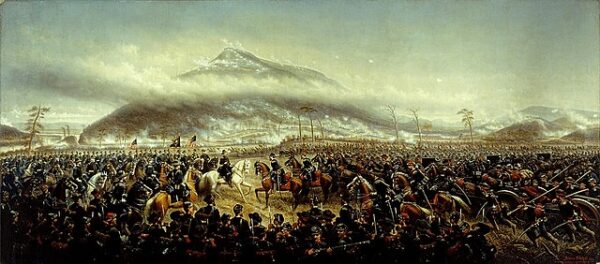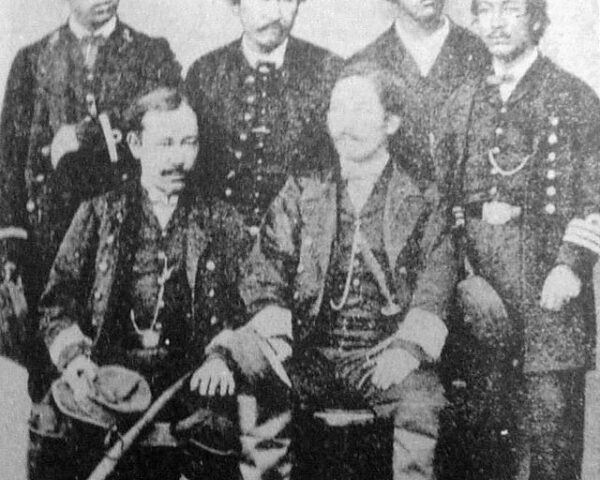On November 24, 1863, Union forces launched one of the most visually dramatic and symbolically powerful actions of the American Civil War: the assault on Lookout Mountain, a towering, fog-shrouded massif that loomed over the desperately besieged city of Chattanooga, Tennessee. The engagement—popularly remembered as the “Battle Above the Clouds”—formed a critical part of General Ulysses S. Grant’s broader plan to shatter the Confederate Army of Tennessee’s stranglehold on the region, open the Deep South to invasion, and restore Union momentum after months of military uncertainty.
Chattanooga’s strategic value had been clear since the war’s outset. A major rail junction and gateway to the Deep South, the city served as the logistical hinge connecting eastern Tennessee, Georgia, Mississippi, and Alabama. By the fall of 1863, however, Union fortunes in the region appeared bleak. After their defeat at Chickamauga in September, federal troops under Major General William Rosecrans had retreated into Chattanooga, only to be surrounded by Confederate General Braxton Bragg’s army. From the lofty heights of Lookout Mountain and Missionary Ridge, Bragg’s forces controlled the roads and rail lines, squeezing Union supply routes and reducing soldiers in the city to half-rations. By October, Washington feared Chattanooga would fall.
The appointment of Ulysses S. Grant to command the newly formed Military Division of the Mississippi shifted the momentum. Grant quickly reorganized the army, relieved Rosecrans, and installed Major General George H. Thomas as head of the Army of the Cumberland. Just as importantly, Grant approved and expanded an audacious plan devised by subordinate officers to reopen the city’s supply line. The resulting “Cracker Line” operation successfully reopened a vital corridor along the Tennessee River, alleviating the siege’s worst privations and setting the stage for offensive action.
Lookout Mountain itself presented formidable natural obstacles. A steep, rocky incline rising more than 2,000 feet above the river, cloaked in dense fog and forest, it provided the Confederates with commanding artillery positions and observation posts. Grant recognized that driving Confederate forces from the mountain’s northern slopes—and threatening Bragg’s defensive network—was essential to any attempt to break the siege fully.
The task of assaulting Lookout Mountain fell to Major General Joseph Hooker, whose force included divisions from both the Army of the Cumberland and the XI and XII Corps transferred east from the Army of the Potomac. At dawn on November 24, Hooker initiated his attack, advancing from the valley floor toward the mountain’s western and northern slopes. Low clouds and fog enveloped the peak, creating conditions that limited visibility but also obscured Union movements from Confederate observers. Soldiers later recalled that the mist seemed to swallow whole regiments as they ascended the mountain, lending the battle its enduring mystique.
The primary Confederate defenders—roughly 8,700 men under Major General Carter Stevenson—were stretched thin across the mountain’s vast expanse. Although the terrain favored the defenders, Hooker’s multilayered advance gradually pushed them back. Fighting raged across rocky outcrops, palisades, and wooded ridges as Union forces captured key positions, including the Craven House, a central Confederate strongpoint. By mid-afternoon, Stevenson recognized that his line was untenable. Receiving no reinforcements from Bragg, he ordered a withdrawal toward Missionary Ridge, effectively ceding Lookout Mountain to the Union.
Though not the largest or bloodiest battle of the war, the victory carried outsized strategic and psychological weight. Union soldiers planted their flags above the clouds, signaling that Bragg’s grip on Chattanooga was slipping. The fall of Lookout Mountain opened the path for Grant’s decisive assault on Missionary Ridge the following day, where federal troops famously stormed the heights and routed the Confederate Army of Tennessee. Within forty-eight hours, the siege was fully broken.
The Battle of Lookout Mountain became emblematic of the Union’s resurgence in the Western Theater, showcasing effective coordination, engineering ingenuity, and Grant’s relentless strategic focus. More broadly, it paved the way for General William T. Sherman’s subsequent Atlanta Campaign and, ultimately, his March to the Sea. Chattanooga, once on the brink of collapse, had become the launch point for the Union’s deep penetration into the Confederacy—a turning point illuminated first by the fog-wrapped triumph on Lookout Mountain on November 24, 1863.






